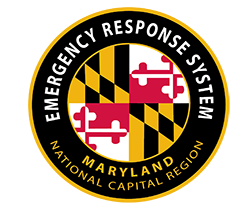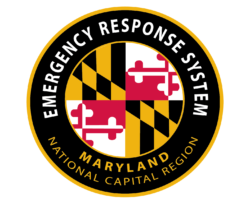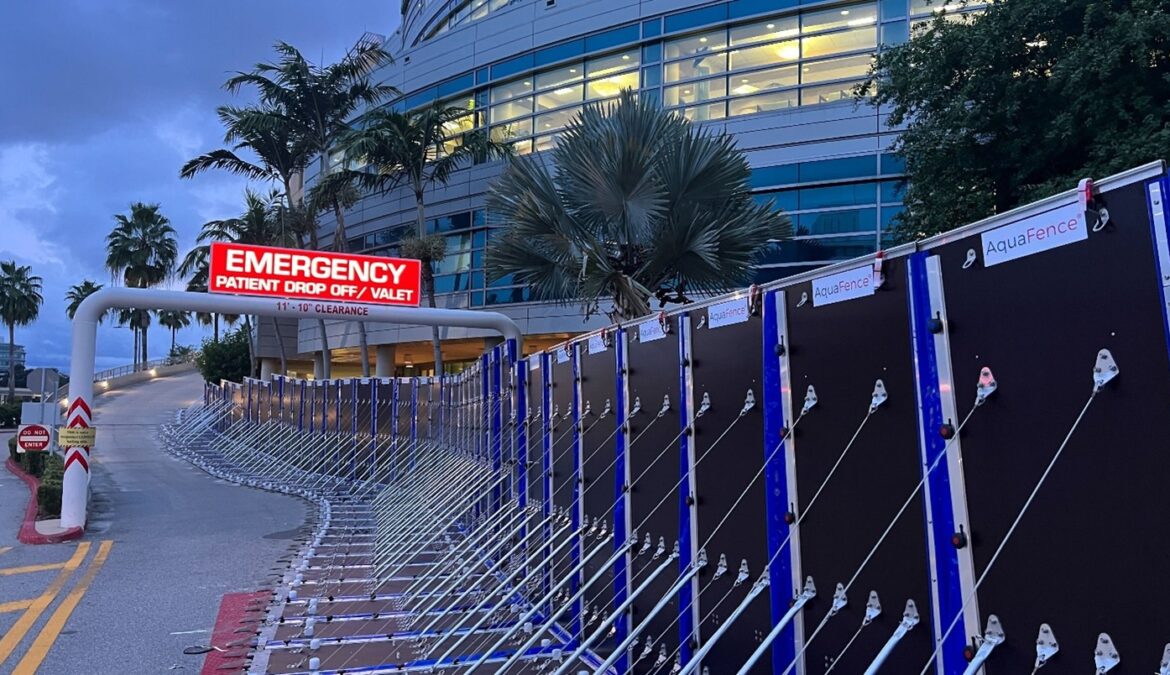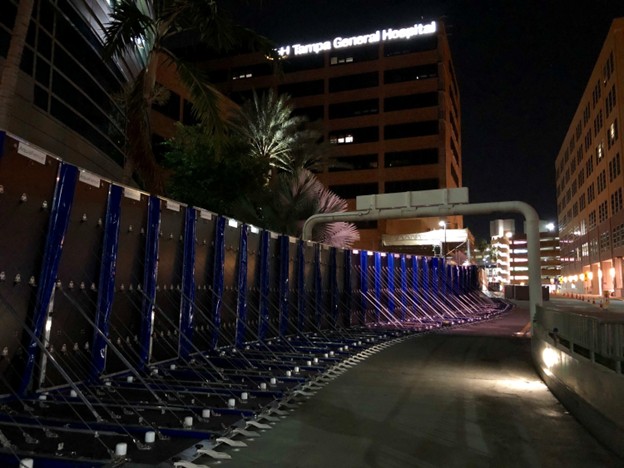As Hurricane Helene approached the Gulf Coast in September 2024, communities braced for impact, aware of the potential devastation that heavy rains, flooding, and high winds could bring. Amid the regional anxiousness, an innovative measure known as the FloodWall created by AquaFence, a state-of-the-art flood defense system, emerged playing a crucial role outside the Tampa Bay Hospital. This advanced barrier not only protected vital healthcare infrastructure but also showcased how technology can significantly enhance resilience against natural disasters.
Hurricanes can have devastating effects on communities and critical infrastructure, leading to loss of life, economic damage, and long-term social and environmental disruption. The impacts are often felt most in vulnerable regions and pose significant challenges to recovery. Communities can face damage to buildings and homes from wind damage, flooding and power outages. These effects not only impact communities but also have significant consequences for critical infrastructure. Hospitals are essential during emergencies and hurricanes can render them non-functional due to structural damage, flooding, and power loss. Unfortunately, during Hurricane Katrina, Memorial Hospital in New Orleans suffered catastrophic flooding and power outages that incapacitated its ability to be operational. The lower floors of the hospital were submerged, leaving patients stranded. Vital equipment was unusable due to the loss of power. Among those major obstacles, the extensive flooding caused delayed evacuations leading to avoidable fatalities. The ability to reduce harm to communities and critical infrastructure, as Hurricane Katrina caused to Memorial Hospital, is vital to community sustainability during hurricanes.
The AquaFence is a leading floodwall, with its flexible, modular flood protection system that is designed to create a watertight barrier against rising waters. The easily deployable walls are made with durable, lightweight materials and contain an adjustable locking mechanism to interlink multiple segments into a continuous wall. The FloodWall utilizes a no fill system that allows the barrier to be deployed without any need to alter structures and without the need to fill with sand. Versatility and adaptability are crucial in dynamic emergency situations, where every minute counts.
The use of AquaFence in hurricane response highlights a crucial shift towards integrating advanced technologies in emergency response and disaster management. As climate change continues to escalate the frequency and intensity of storms, innovative solutions like AquaFence will become increasingly important. During Hurricane Helene, the Tampa Bay Hospital was faced with daunting devastation while recovering from Hurricane Milton a week prior. By thinking ahead and choosing the AquaFence as one the primary defenses against the hurricane, they were able to effectively mitigate the flood risk and demonstrate its vital role in emergency preparedness and response.
The 2024 Atlantic hurricane season was marked by above-average activity, with 15 named storms, 7 hurricanes, and 3 major hurricanes reaching Category 3 status or higher. Coastal regions, especially in the U.S. Gulf Coast, Florida, and the Caribbean, were heavily impacted, facing storm surges, flooding, and significant wind damage. Several innovative approaches were employed to mitigate damage, including advanced forecasting technologies using AI and drones, the deployment of flood-resistant building materials, and the enhancement of storm surge barriers. Efforts in restoring coastal ecosystems, such as mangroves and coral reefs, helped provide natural defenses, while parametric insurance and climate risk financing offered quicker recovery funds. Despite the season’s intensity, these advancements in resilience, technology, and planning helped reduce the impact on vulnerable regions and improve recovery times.
Utilizing innovations in technology, infrastructure design, and disaster management can significantly reduce the harm caused by hurricanes to communities and critical infrastructure. These innovations not only improve preparedness and response efforts but also enhance long-term resilience. The Maryland-National Capital-Region Emergency Response System (MDERS) strives to promote and incorporate innovative solutions among stakeholders by creating the Emerging Homeland Security Technology Pilot, also known as the Innovation Fund. This initiative invites stakeholders to submit proposals for innovative solutions that could enhance the effectiveness and efficiency of emergency response efforts. Once ideas are submitted, they are presented at Steering Committee meetings, where members evaluate and vote on which solutions will be funded. Recent examples of innovative procurements include monitoring and alert systems for technical rescue operations, advanced ultrasound equipment for field injuries, and virtual reality equipment to replicate realistic emergency scenarios. MDERS and stakeholder agencies continue to seek new technology to contribute to building safer, more resilient communities in the National-Capital Region.
Hurricane Helene served as a firm reminder of nature’s unpredictability and the destruction that comes along side it but also showcased the power of innovation in disaster response. Proactive measures can protect jurisdictions from flooding and ensure critical infrastructure, such as the Tampa Bay Hospital, remain operational during these emergencies. Embracing innovative technologies is key to enhancing preparedness for natural disasters and ensuring that we are equipped to face the challenges of an ever-changing world.
Written by Melinda Lacek
References
Aquafence Floodwall: Premier flood barrier solution. AquaFence Flood Protection. (n.d.). https://www.aquafence.com/floodwall
Jennifer Sangalang, R. N. and Y. T. (2024, September 27). Hospital surrounded by 3 sides of Bay Water in Tampa went viral, avoided Hurricane Helene storm surge. Tribune. https://www.heraldtribune.com/story/weather/hurricane/2024/09/27/hurricane-helene-tampa-hospital-flood-video-aquafence/75407878007/
Sullivan, D. (2024, September 25). Tampa general Builds “AquaFence” as area hospitals brace for helene. Tampa Bay Times. https://www.tampabay.com/hurricane/2024/09/25/tampa-general-hospital-hurricane-helene-emergency-room-preparations/



